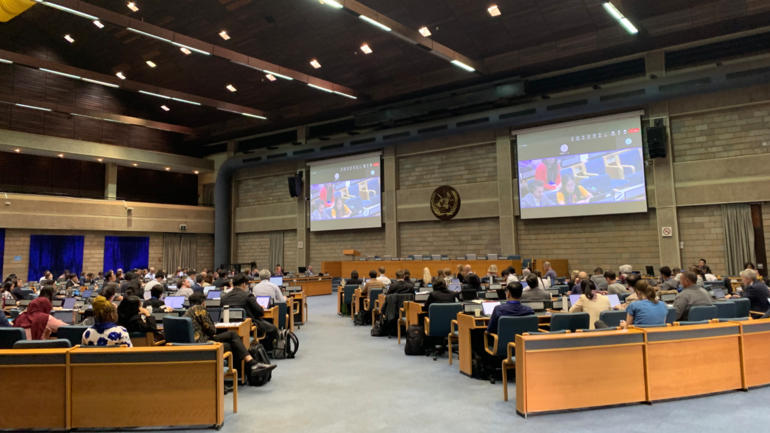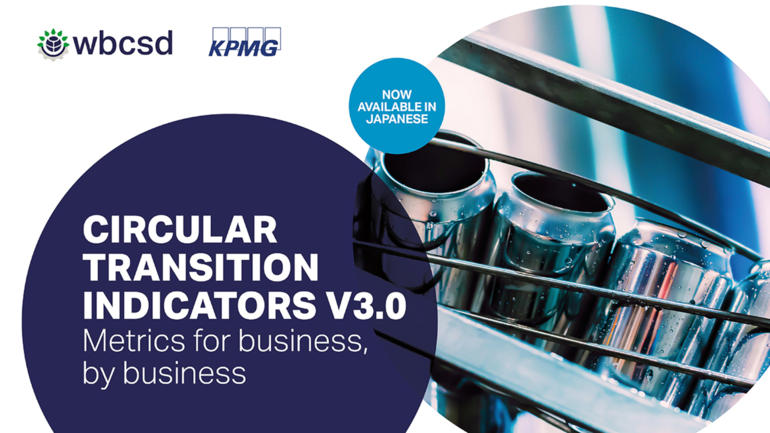Geneva, 6 June 2018: the World Business Council for Sustainable Development, Circle Economy, PGGM, KPMG and the European Bank for Reconstruction and Development launch the “Linear Risks Essay” which demonstrates the real business threats linear economic business practices are creating. These include risks associated with the use of scarce and non-renewable resources; prioritisation and sales of products produced with virgin resources; the failure to collaborate; and failing to innovate or adapt. These are all factors that will negatively impact the ability of organisations to continue business as usual.
"Linear risks are real. A shift to a circular economy will change corporate risks, cash flows and customer relations for businesses. The financial sector will need to adapt to these changes to be able to offer the products and services businesses will need." -Frido Kraanen, Director of Responsible Entrepreneurship PGGM and Project Lead FinanCE working group
More and more companies are confronted with ‘Linear Risks’ like price volatility, supply chain failures as well as fines or lawsuits due to changing legislation. This linear approach does not only cause serious business threats, it also hinders our ability to achieve the Sustainable Development Goals, the Paris Agreement, or close the global circularity gap of 91%. As these risks are grounded in the linear setup of our economy, there is an urgent need to start a dialogue with the financial and business community on the potential implications with a view to explore solutions.
"The ‘Linear Risks’ essay is a trailblazing piece that is redefining the circular economy debate on the way forward. It is a must read for businesses and entrepreneurs as linear risks are real. - Harald Friedl, CEO Circle Economy
This essay, co-authored by Circle Economy, PGGM, KPMG, WBCSD, and EBRD, aims to raise awareness and create a constructive dialogue with the financial and business community to better understand and model ‘Linear Risks’ - the exposure to the effects of linear business practices which will negatively impact an organisation’s ability to continue as a going concern. Businesses face these risks if they utilise scarce and non-renewable resources, prioritise sales of new products, fail to collaborate, and fail to innovate or adapt. If unresolved, these could have serious effects on the financial industry and our global economy.
Knowledge and Innovations Manager Circle economyWe hope that this essay emphasises the urgency and the importance of taking the real risk of our linear economy into account. We look forward to building on this essay together with our partners and the wider business community to eventually ensure that 'Linear Risks' become an integral part of financial decision making process
The circular economy can provide a solution to mitigate these ‘Linear Risks’. The circular economy is an emerging economic concept that provides new business models and strategies to continuously reuse materials and resources to their fullest potential and is aimed at achieving social well-being while operating within the boundaries of our planet. We call upon all relevant stakeholders to effectively address ‘Linear Risks’. We suggest four distinct follow up measures:
- Collaborate to deepen the understanding of ‘Linear Risks’ by building on this essay with risk managers and translate ‘Linear Risks’ into financial risk management language
- Understand the short-term and long-term implications of these 'Linear Risks' and how they influence the business and financial community across various time scales
- Create forums with investors and business stakeholders to test the concept of ‘Linear Risks’ and work towards a practical implementation agenda to integrate ‘Linear Risks’ into established enterprise risk management (ERM) processes
- Specifically address the disclosure challenges of ‘Linear Risks’ and explore how the current movement for disclosure of climate change risks in portfolios can serve as a model to incorporate ‘Linear Risks’.
Building on this essay, we intend to spark further research to develop specific ‘Linear Risks’ metrics and tools that make it easier for investors to account for them in their analysis. And eventually, we hope that ‘Linear Risks’ will become an integral part of decision-making in the financial and business community.








